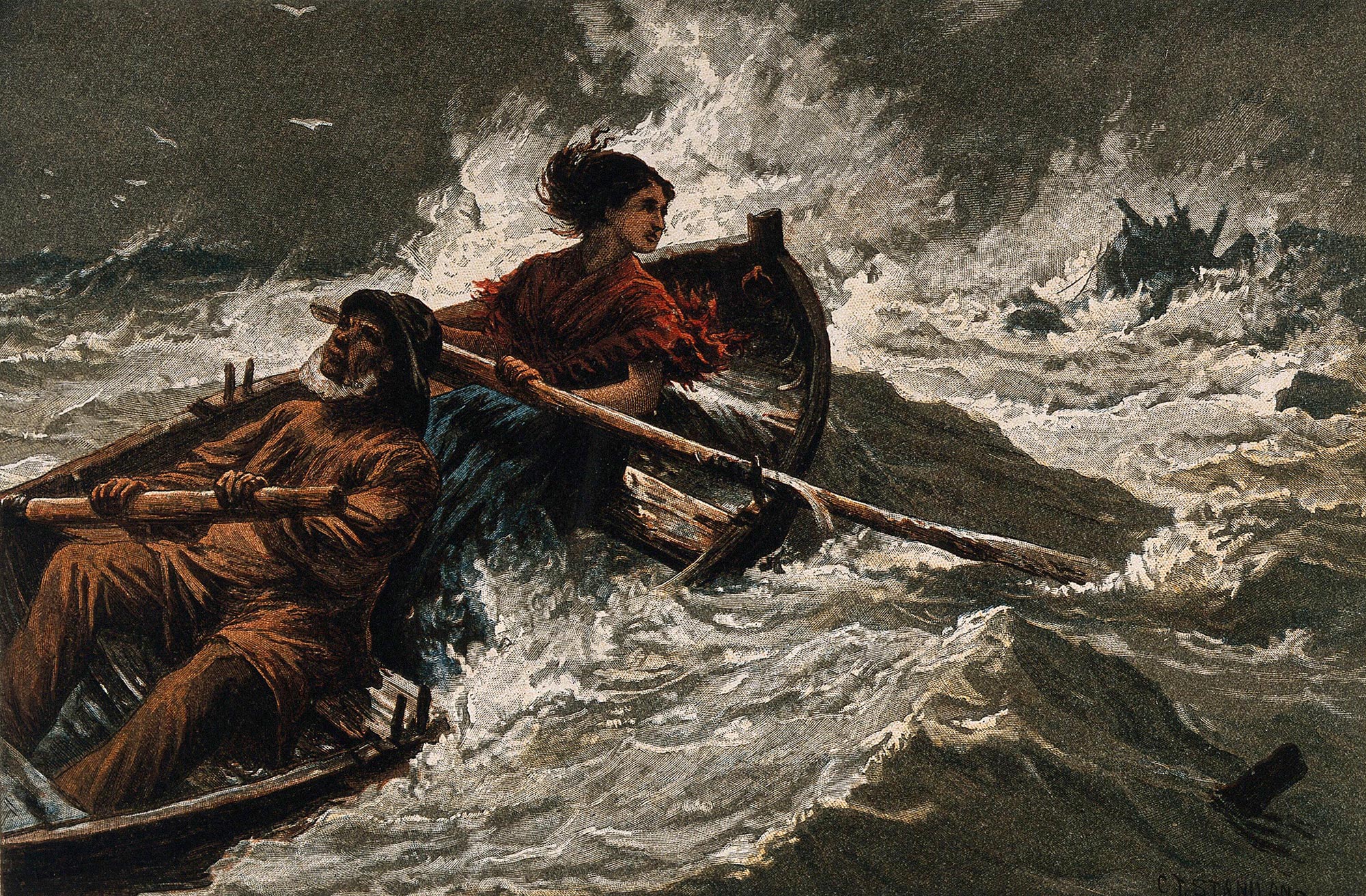Research fills in the gaps left by previous generations' recording of history revealing a host of fascinating and inspirational stories.
Grace Darling; Victorian Heroine of Wreck and Rescue
When Grace Darling was born on 24 November 1815, in the Northumbrian town of Bamburgh, to the lighthouse keeper William Darling and his wife Thomasina, there was little indication that she would become one of the most fêted heroines of the Victorian era and a celebrated media figure.
William was the keeper at Brownsman lighthouse among the Farne Islands, but in 1826 transferred to the new Longstone light, which was better positioned to warn shipping away from the Farne Islands. Sadly, it was not enough to prevent one of the most notorious wrecks lost in that area, which would forever after associate the name Darling with the Longstone lighthouse.
The Farne Islands are a notorious ships' graveyard: a collection of rocks and small islands lying off the forbidding cliff of Bamburgh.
Caught in a storm with the wind blowing from the south-east, countless vessels coming from the south overshot their intended destination of Tynemouth to come to grief among the Farnes further to the north. Many of the Farne rocks have names hinting at their capacity to tear ships apart, among them the Fang and the Knivestone.
During a storm on the night of 7 September, 1838, like many other vessels before and since, the paddle steamer Forfarshire, bound from Hull for Dundee with a general cargo and passengers, was driven onto the rocks and 'went to pieces': few people today now realise the maritime origin of this phrase.
On that fateful night, Grace, now 22, was at home at the lighthouse with her parents. The lighthouse would have borne the brunt of the storm, battered by the huge waves crashing against its walls, so its effects on the disintegrating wreck can easily be imagined.
In the early morning the family could just make out the wreck, but only when it was fully light could they see the survivors on Big Harcar Rock, clinging to the fore part of the wreck which was all that remained. The weather conditions were too atrocious to permit any hope of rescue from the mainland, and local fishermen considered the attempt far too perilous.
Even William himself had his doubts, but there was no other possible help for the few survivors still clinging to what remained of their ship, so he and his daughter prepared to set out in their coble to do what they could to rescue survivors.
The north-east coble at its smallest was a sturdy little rowing boat, used for fishing and piloting other ships, and was the inspiration for the earliest lifeboats, being easy to right in difficult conditions. After a short but dangerous passage among the rocks in extreme conditions, the Darlings were only able to take five people off the rock on their first attempt, including a lady still clinging to the bodies of her two dead children in grief.
On the second attempt William Darling returned to Big Harcar with some of the crew he had rescued the first time round, to pick up the other four survivors, leaving Grace behind with her mother to care for the remainder of the first group in the lighthouse. The storm raged for two days before the survivors could be taken to the mainland.
The rescue became a media sensation at a time when most newspapers published shipping news, vital in Victorian Britain which relied on her mercantile trade overseas and her navy. Wrecks were commonplace and the loss of life correspondingly high: shipping losses were newsworthy for commercial, insurance and humanitarian reasons. Slowly but surely, as the appetite for news in general increased, so did the column inches devoted to the "human interest" aspect of shipwreck incidents, becoming increasingly melodramatic in tone. Such a rescue against all the odds caught the imagination of the public, particularly because Grace had single-handedly kept the coble in position as her father assisted the survivors into the little vessel, and because, at any moment, the little coble could have suffered the same fate of the much larger ship.
Grace and her father were given medals and financial rewards, and were inundated with visitors, letters, and requests for souvenirs.
Grace's fame eclipsed that of her father, who was referred to as "Grace Darling's father" when he was involved in further rescues, notably the Success in 1853, and the Trio in 1860.
Her early death from tuberculosis in 1842 increased national fervour and provided an occasion for the new Poet Laureate, William Wordsworth, to write an appropriate tribute. There is a monument dedicated to her in St Aidan's churchyard.
The house where Grace Darling was born; 7 Radcliffe Road, Bamburgh (also known as Horsley Cottage) is now a Grade II listed building.





